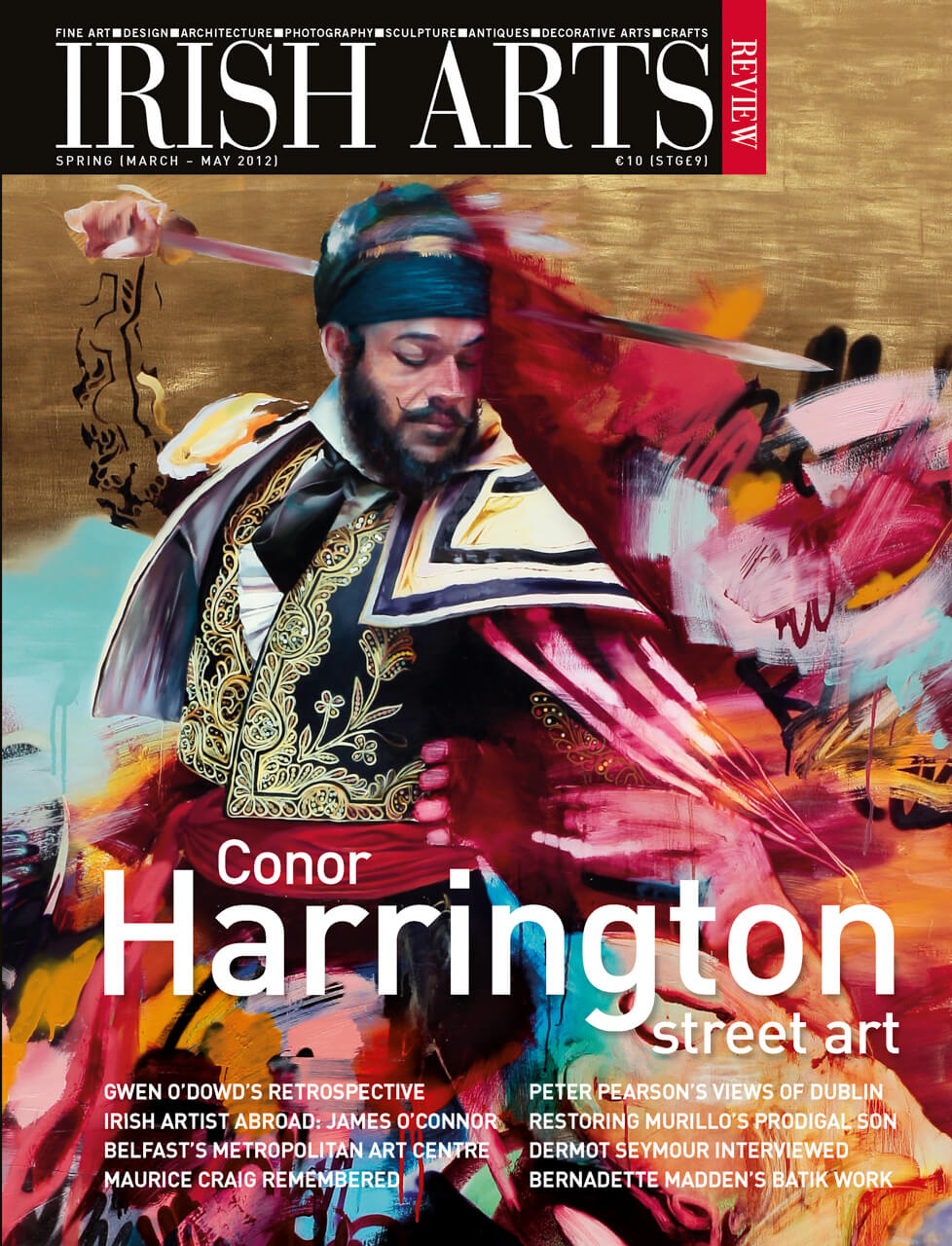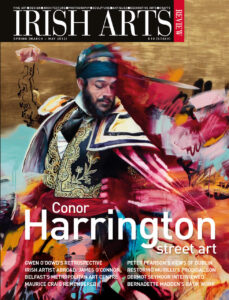

Cosmopolitan yet connected to local issues, Mervyn Wingfield, 7th Viscount Powerscourt played a prominent role in promoting Ireland’s cultural institutions at a pivotal time in their early history, writes Philip McEvansoneya
Although he played a prominent role in many areas of public life during a period of almost fifty years, the activities of Mervyn Wingfield, the 7th Viscount Powerscourt (1836-1904), have received little attention and never the comprehensive and detailed treatment they deserve. Powerscourt was a politician at both local and national levels, as happy to promote the Enniskerry Omnibus Company as he was to debate education or land issues in the House of Lords at Westminster. He was involved in many aspects of Irish cultural life and was affiliated with numerous bodies including the Royal Dublin Society and the Royal Hibernian Academy. The present article concentrates on some of Powerscourt’s activities as an art collector and his connections with the National Gallery of Ireland (NGI) and the National Museum of Ireland.
Powerscourt summed up his principal pleasures, including the hunt and art-collecting, in a book, A Description and History Powerscourt (1903). There he alluded to the travels which allowed him to develop the artistic tastes of the connoisseur which he employed in his public roles and in expanding and refreshing the family art collection at Powerscourt House, Co Wicklow (Fig). This photo shows one small section of the collection, containing works of many schools and genres. On the left hangs Tintoretto’s St Mark Preaching at Venice above landscapes by Salomon Ruysdael, Joseph Vernet and Charles Brooking. 1 _Powerscourt spent two decades and more repairing and improving the house. Unfortunately it was substantially burnt out in 1974. However the beautiful grounds survive as originally laid out by the 6th Viscount and his gardener, Daniel Robertson, in the early 1840s. According to Powerscourt himself, the upper stone terrace was influenced by that in the gardens of a Sicilian villa then known as the Villa Butera. An unrelated namesake, Alexander Robertson, worked in close collaboration with Powerscourt to complete the gardens. Although they considered other designs, and despite Powerscourt’s study of gardens in Austria, France and Germany, they stuck to the original vision including the sequence of impressive terraces which stretch down to the lake, framing the distant landscape, to the admiration of generations of visitors.
Powerscourt brought enthusiasm and discernment to his private art purchases. Although some of the attributions he made do not now stand up to scrutiny, others were highly astute. The most notable was the ‘Metsu’, Lady at a Table – Ewer and Dish which he recognized as a Vermeer that is now known as Young Woman with a Water Pitcher. This was a real prize as Vermeer had long fallen into obscurity and his work had only begun to be correctly identified since the 1860s. Powerscourt was determined to prove the authorship of this work so he travelled to Dresden in order to carry out a mental comparison with Girl Reading a Letter at an Open Window in the Gem√§ldegalerie there. Nevertheless, he stuck to his established practice of trading up his collection and sold the work after about ten years. Although Powerscourt lent generously to many exhibitions the Vermeer seems never to have been exhibited in Ireland, but he did send it to the Royal Academy winter exhibition in London in 1878.
Addressing the Art Union of Ireland in 1876 Powerscourt, a frequent public speaker on artistic matters, revealed his somewhat conservative tastes in recent and contemporary art. In an allusion to J M Whistler, he dismissed ‘Symphonies in Black and Grey’ as transient eccentricities which, even though they possessed ‘every mark of great talent, brought art to the verge of caricature’. He praised living British artists such as John Everett Millais and Frederic Leighton, but those on his list of notable Irish artists – James Barry, George Barret, Francis Danby, Daniel Maclise – were all dead.2 He seems to have owned no paintings by those artists; the recent British and Irish works he obtained were by artists of lesser attainments such as George Sharp and James Brenan.
Nevertheless, Powerscourt was an ideal candidate for appointment early in 1864 to the board of the newly inaugurated National Gallery of Ireland, of which he was by far the most active member, making a contribution of the highest importance. He brought to this role, which he was to play for forty years, not only his knowledge of art and museums derived from close study abroad, but also his strong belief in the didactic capacity of art. Although Powerscourt’s role in the NGI was advisory, he succeeded in making it much more hands on, for example travelling to Paris with the first NGI director, George Mulvany, where they selected works by Moroni and
Bellini.
Powerscourt collaborated on close and friendly terms with Mulvany’s successor, Henry Doyle, director of the NGI from 1869-92, whose abilities he respected and valued. Powerscourt and Doyle often went together to inspect and assess works for purchase, and became well known as something of a double-act although Powerscourt occasionally acted alone. 3 Their budget was miniscule but nevertheless they made discerning purchases, many of them at Christie’s in London. They also travelled to sales on the Continent when their movements were followed with interest, not least by Austen Henry Layard and Sir William Gregory of Coole, Co Galway, the two most active of the trustees of the National Gallery in London; they admired Doyle’s acumen and may have been a little envious of Powerscourt’s decision-making power. Sometimes Doyle and Powerscourt found themselves in the right place at the right time, for example when they unexpectedly obtained an unusual work by Rembrandt, The Rest on the Flight into Egypt, when their bidding rival briefly left the auction room. However, at times their enthusiasm ran away with them such as when they bought a portrait in Brussels in 1890 believing – as did many others, it might be said in their defence – that it was another Rembrandt. It is now attributed to Govert Flinck.
Powerscourt had long been on friendly terms with the then Lord Lieutenant, Earl Spencer. In 1869, during Spencer’s first period in Ireland, Powerscourt wondered if he would be inclined to lend any pictures to the NGI from the collection at his country seat in Northamptonshire which then held one of the richest of English art collections. Spencer resisted the idea ‘that one of the siderooms … might temporarily be called the Spencer Gallery if … a few pictures could be spared from Althorp’.4 Powerscourt would have been well aware that the NGI collection at that time was still in an embryonic state with a limited number of works of high merit and immediate visual appeal. That may well explain why, in the run-up to the official opening of the gallery he made an important donation to the collection, Tosini’s Venus and Cupid (Fig ). In addition to its bright colour and racily presented subject matter, this work had the virtue of being based on a design by Michelangelo.
This was preceded in 1857 with the gift of another, lesser, work to the nascent collection, and was followed up two years later with a copy, reputedly by the 17th-century painter Domenichino, of Raphael’s St Cecilia (1513-16, Pinacotheca, Bologna). Although it was not the general practice to accept copies, it was common sense to do so when the copy was of high quality and the likelihood of obtaining an original by an artist such as Raphael was slight. Indeed, in 1864 the gallery had bought a full-scale copy of Raphael’s Transfiguration (1518-20, Vatican Museum) then believed to be by Raphael Mengs but now attributed to the Scotsman, James Durno.5 Several other works once at Powerscourt have entered the NGI collection over the years, the most recent example, in 2001, being Christ disputing with the doctors attributed to Juan Dó. See Irish Arts Review, Summer 2010, p144.
In another capacity, Powerscourt chaired the committee which oversaw the design and construction of the Dublin Museum of Science and Art, now the National Museum of Ireland, in Kildare Street, which opened in 1890. He saw the great advantage to the city and country of the plan to have a compact cultural quarter containing the National Museum, the National Library, the National Gallery and the Natural History Museum. Powerscourt supported the view that an Irish architect, Thomas Newenham Deane, should design the building which he stated should be built by an Irish firm using iron girders cast in Dublin and employing Irish masons who knew how to work Irish stone.5
In 1884 Powerscourt joined forces with his friend, Sir William Gregory, whom he had brought on to the museum committee, when they found out that an important Irish antiquity, the reliquary of St Lachtin’s arm, was due to come up for sale in London. The reliquary is thought to have been obtained in Ireland by Sir Andrew Fountaine during his service in 1707-8 as Gentleman Usher of the Black Rod to the Lord Lieutenant, the Earl of Pembroke. Gregory and Powerscourt campaigned successfully to ensure that the reliquary was bought at public expense and deposited in Ireland. In modern terms this was an example of the repatriation of cultural property, the return of an object that should be an inalienable part of the national patrimony. Powerscourt and Gregory agreed with the Royal Irish Academy that examples of ‘Celtic archaeology’ should be displayed alongside comparable works and ‘can be best studied and appreciated in Ireland, where alone there exists such traditional and manuscript information as is essential to illustrate its historical and scientific value’. Powerscourt would have understood the historic importance of such an artefact as the reliquary. As chair of the museum committee he would have known the role that the display of such objects was intended to fulfil in constructing a sense of Irish cultural achievement within the new public museum setting.7
A balance can be seen in Powerscourt’s cultural outlook. On the one hand his cosmopolitanism made him eager to ensure that the collections of the NGI should reflect as well as possible the mainstream of post-Renaissance European art. On the other hand, he believed that the historic art of Ireland should actively be collected and preserved in Ireland.
The scale and scope of his public and personal interests and abilities, and the disappearance of his private papers, have up till now placed Powerscourt beyond the grasp of any single biographer. Nevertheless his achievements in some areas can readily be set out and it is to be hoped that Powerscourt will soon receive a long overdue, full-scale reassessment.
Philip McEvansoneya is a lecturer in History of Art at Trinity College Dublin
1 The collection was dispersed in a series of sales after Powerscourt’s death culminating in a major auction 1948; much of the residue went in 1984).
2 Freeman’s Journal, 2 and 11 March 1876.
3 On Doyle see A. Hodge, ‘Sound judgement and pure taste’, Irish Arts
Review, 24:1 (Spring 2007), pp. 92-7.
4 London, British Library [BL], Althorp Papers, Add. Ms. 77109, 28
May 1869.
5 N. Figgis, ‘Raphael’s Transfiguration, some Irish Grand Tour
associations’, Irish Arts Review Yearbook, 14 (1998), pp. 52-6.
6 BL, Althorp Papers, Add. Ms. 77076, 24 January 1885.
7 P. McEvansoneya, ‘’‚Ķ merely an antiquarian curiosity’: the purchase
of the reliquary of St Lachtin’s arm in 1884′, in C. Breathnach and C.
Lawless eds., Visual, Material and Print Culture in Nineteenth-Century
Ireland, Dublin, 2010.
From the IAR Archive
First published in the Irish Arts Review Vol 29, No 1, 2012



